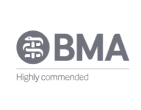Headache rescue medications and medication tolerance
Most rescue medications are pain medications. Rescue medications won't abort a migraine, but hopefully they will mask the pain for a few hours until the migraine runs its course. Rescue medications are intended for use in cases of abortive medicine failure. They also are needed when one can't take the abortive medications, for instance when the time frame for treatment with an abortive agent has passed.
Common rescue medications for headaches
Common rescue medications include opioids, the antipsychotic olanzapine, and the opioid agonist-antagonist tramadol, which has serotonin and norepinephrine effects.
Rescue drugs can be used in isolation or in combination with triptans, for instance when there is frequent rebound on a triptan. Midrin and fioricet are examples of combination medicines that have been used as rescue medications. When used in this complimentary manner, keep in mind that an adequate dose is necessary.
Over-the-counter medications
Some patients find that, if taken early, some over-the-counter medications can be effective, for example, Tylenol, Tylenol combinations with caffeine and aspirin, and some nonsteroidal anti-inflammatory drugs (NSAIDs).
Become a great clinician with our video courses and workshops
Toradol
Toradol injections can be used to treat acute headaches and some patients can administer this drug themselves intramuscularly or subcutaneously.
Corticosteroids
Years of experience suggest that in the acute setting, corticosteroids can be helpful to ameliorate acute migraine headache. However, there is not much direct evidence of its efficacy and even less as to mechanism of action. The presumed effect is on perivascular neurogenic inflammation in the meninges caused by the trigeminal complex cascade.
Dexamethasone (4 mg) has been used with success. Prednisone, starting with a high dose followed by a rapid taper over 10 days can also be effective.
Triptans
Triptans will relieve nausea in many patients. When they do not, antiemetics are helpful. These drugs antagonize dopamine receptors and thus can treat migraine directly, decreasing pain.
Medication overuse headaches
When taken in excess, overuse of a medication can increase the duration, severity, and frequency of the headache, thus transforming an episodic headache into chronic daily headache. This is called a transformed migraine.
The mechanism is medication tolerance, which is a diminished response to a drug, when the drug is used repeatedly, and the body adapts to the continued presence of the drug.
Patients with transformed migraine often overuse analgesics, decongestants, triptans, ergotamines, muscle relaxants, and over-the-counter remedies to get relief, and then need more of that drug more frequently. Although there is some controversy, it seems Fioricet and Midrin can also become overused with time if their use is not monitored. Some neurologists claim that overuse of nonsteroidal anti-inflammatory drugs can cause medication overuse headache, but many others contend that this is rare. I have not seen it in my experience.
That’s it for now. If you want to improve your understanding of key concepts in medicine, and improve your clinical skills, make sure to register for a free trial account, which will give you access to free videos and downloads. We’ll help you make the right decisions for yourself and your patients.
Recommended reading
- Blumenfeld, AM. 2018. Botox for chronic migraine: Tips and tricks. Practical Neurology. 17: 27–36. https://practicalneurology.com
- Halker Singh, RB, Starling, AJ, and VanderPluym, J. 2019. Migraine acute therapies. Practical Neurology. 17: 63–67. https://practicalneurology.com
- Krel, R and Mathew, PG. 2019. Procedural treatments for headache disorders. Practical Neurology. 17: 76–79. https://practicalneurology.com
- Mauskop, A. 2012. Nonmedication, alternative, and complementary treatments for migraine. Continuum (Minneap Minn). 18: 796–806. PMID: 22868542
- Motwani, M and Kuruvilla, D. 2019. Behavioral and integrative therapies for headache. Practical Neurology. 17: 85–89. https://practicalneurology.com
- Natekar, A, Malya, S, Yuan, H, et al. 2019. Migraine preventative therapies in development. Practical Neurology. 17: 54–57. https://practicalneurology.com
- Parikh, SK and Silberstein, SD. 2018. Calcitonin gene-related peptide monoclonal antibodies. Practical Neurology. Feb: 20–22. https://practicalneurology.com
- Rizzoli, PB. 2012. Acute and preventative treatment of migraine. Continuum (Minneap Minn). 18: 764–782. PMID: 22868540
- Tepper, SJ and Tepper, DE. 2018. Neuromodulation and headache. Practical Neurology. 17: 42–45. https://practicalneurology.com
Become an expert



